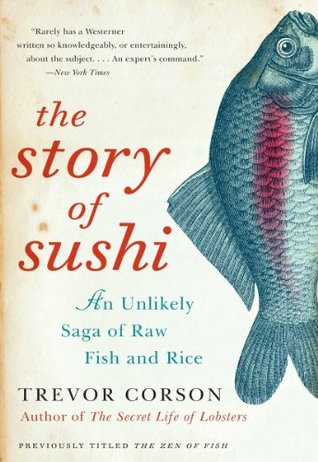More on this book
Kindle Notes & Highlights
Read between
January 7 - January 12, 2022
Today, MSG is manufactured by the ton and added to all varieties of processed foods. Most Americans associate MSG with Chinese food, but it is also added to canned foods, soups, salad dressings, chips, and fast food. On product labels it is usually disguised as “hydrolyzed vegetable protein.” It is even added to much of our processed meat and poultry because modern industrial production has robbed animal flesh of its own flavor. The Buddhist vegetarian condiments of ancient Japan are now used to make American factory meat palatable.
Every Pandalus shrimp starts out male. He spends his first two or three years as a bachelor, during which time he generally loses his virginity. Once he’s had his fun, his testes transform into ovaries and he matures into a female. At which point, she turns around and hits up the new generation of strapping young males for more sex. There is some evidence that if females are especially numerous, the males can delay their sex change and remain playboys for an extra season or two. Likewise, if there aren’t enough females, the males may give up their bachelorhood and switch early.
When it comes to sex, snappers are the opposite of shrimp. They all start out as females. After a year or two, some of them perform a sex-change operation on themselves and become male. Because these fish take so long to mature, populations of sea bream and snapper grow slowly. A population of mackerel that is left alone can double in size in just three or four years. For sea bream, it can take fourteen years. Furthermore, the fish are predictable. Every year big groups of them return to the same spots to spawn.
Long before the Norwegians started farming salmon, the Japanese started farming tai to supplement wild stocks. They bred Frankenfish tai that grew 40 percent faster. They even used human pregnancy hormones to induce the fish to spawn. By the mid-1990s, Japanese aquaculture companies were farming six times as many tai in floating cages as fishermen caught in the wild.
In the United States, most people have never heard of engawa. Some fish purveyors know enough to set it aside. It’s sometimes referred to in English as “dorsal fin muscle.” Actually, since a flatfish is a regular fish lying on its side, half of all engawa is technically “anal fin muscle.” But that’s not something sushi chefs emphasize.
As far as scientists can tell, all American and European freshwater eels are born in or near the seaweed-filled Sargasso Sea, in the Bermuda Triangle. After hatching, the baby eels leave the Sargasso and start swimming. They don’t stop until they reach their destination. That destination could be a river in Iowa or a river in Germany. The journey to Europe can take a glass eel two or three years to complete. Relative to body size, it’s the equivalent of a human swimming to the moon.
Adult eels live in their freshwater homes for eight to ten years, some much longer. They eat until their bodies contain nearly 30 percent fat, and toward the end of their lives they slither back to the sea to mate. As they leave freshwater, their digestive systems dissolve and disappear. They will never eat again. Like salmon, they survive by digesting their own fat, and after that, their own muscle protein. Scientists assume that they return to the Sargasso and Philippine seas to mate, but to this day no one has witnessed eels spawning, and no one knows how they travel so far without food. In
...more
The stiffness of the swimming tuna is so well known in Japan that the word maguro is used to describe a woman who is stiff during sex.


